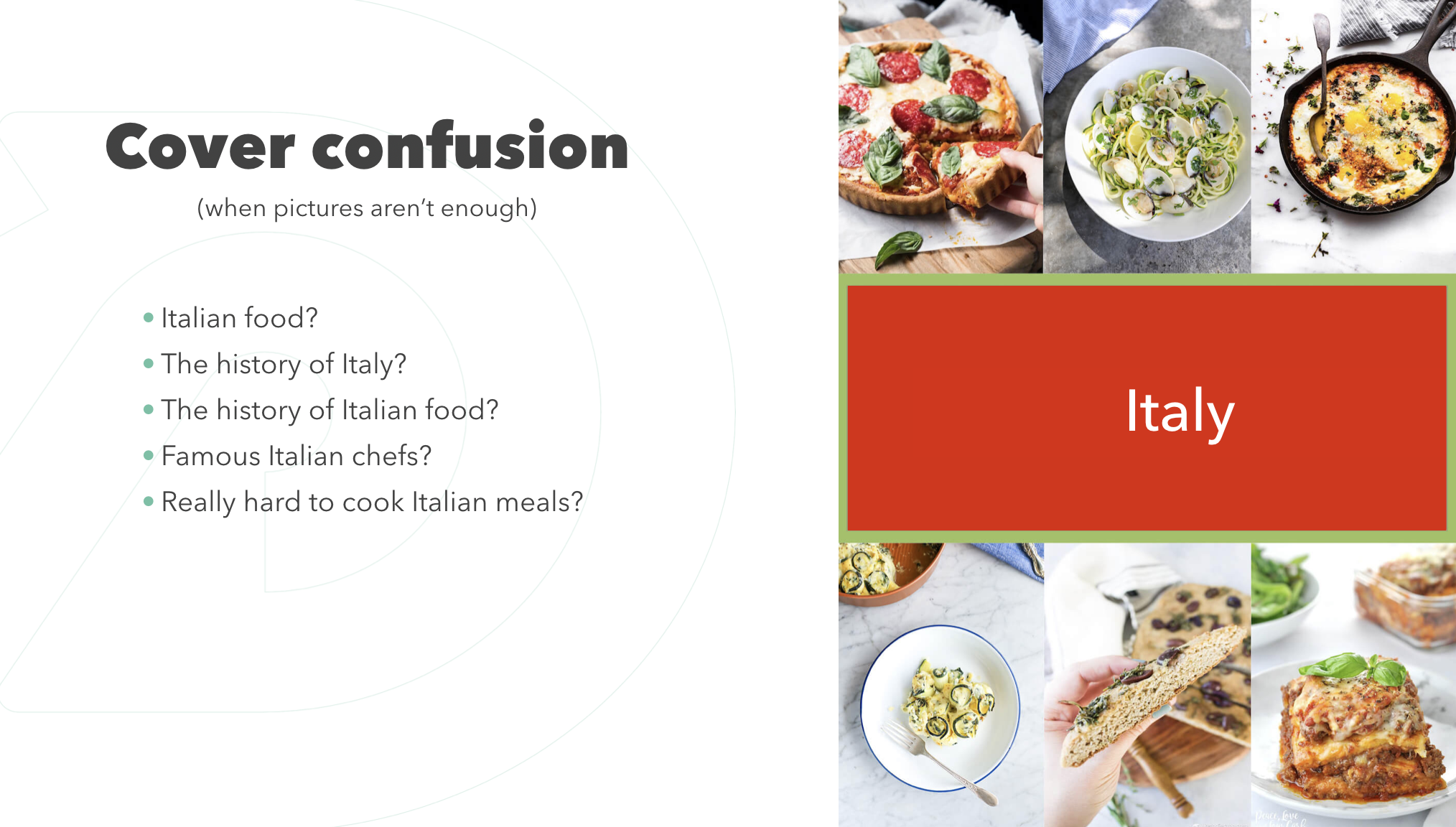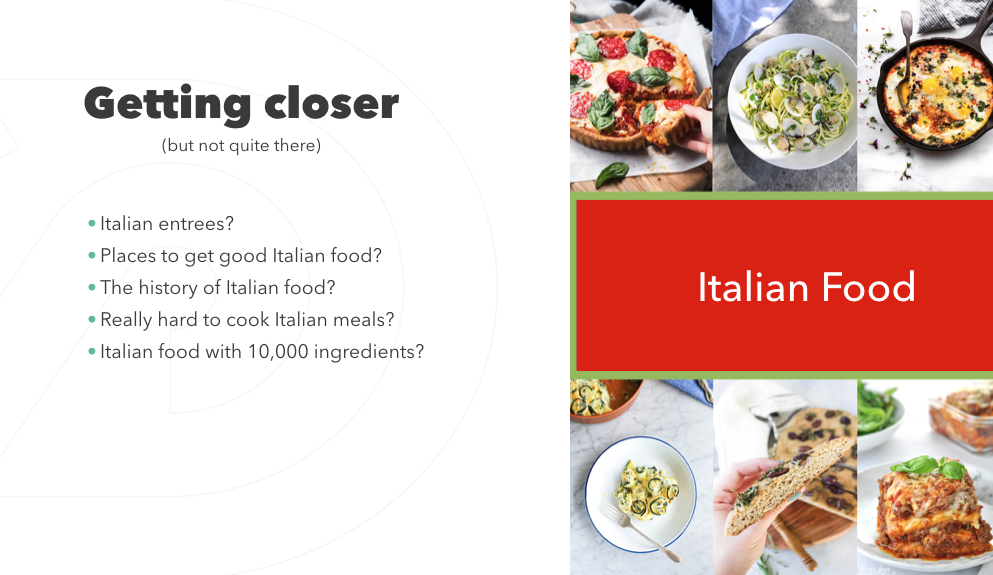In smaller organizations (and, okay, sometimes in large ones), marketers are asked to wear lots of hats — and SEO may be only one of those. We’ve heard you: lots of our Found Friday viewers and blog post readers have discussed the difficulty of implementing a simple SEO strategy in the real world.
They’ve asked us questions like:
- How does findability impact my overall marketing strategy?
- What’s the best way to build great content that’s also SEO-friendly?
- How on earth do I find the time to incorporate search optimization into everything in the marketing ecosystem?
Where do we start with SEO?
Prioritizing the basics of SEO is a huge problem for marketers — and perfect for our Found Friday series (it’s for marketers and by marketers). In this series, we’re talking about findability basics for marketing pros. Below are a sampling of the questions we’ll answer here:
- What is findability in relationship to marketing?
- How are search and content working together in findability?
- What are the fundamentals of findability from an SEO perspective?
- How do I prioritize SEO issues in my marketing workflow?
- I’ve inherited a site with tons of problems — what do I do?
- What are five things I can focus on right away to give my site a boost?
Want to watch the first video in the series? Check it out here
Focusing on content marketing – the science of getting found
Let’s talk first about the core concept of findability.
Defining how to get found
Findability is, at its core, the ability for a person to access the products, services, and information they need. It’s all about the experience of the user as they search for that information. We can think of findability is an entire ecosystem. For example, more than half of cable box users are “dual screening” — meaning they watch TV with a phone, tablet, or laptop in hand, and are likely to google an interesting product they see advertised on TV. Another example: Studies have shown that people are 90 percent more likely to engage with a product in-store if they’ve seen it advertised online or through another channel.
Findability isn’t just about the initial encounter of a product, service or piece of information — it’s about the user experience from “meeting” the product through engagement. And, findability isn’t only the basic nuts and bolts of SEO. As marketers, we do ourselves a disservice when we think in solely technical terms — so don’t ignore the “findability talk.”
Thinking about findability in a holistic way is important for several reasons:
- Findability saves money. Even if your organization is satisfied with its traffic, you could be leaving revenue on the table, or spending more money on leads and conversions, by leaving your findability at the status quo.
- Findability will help you reach new eyes. If you’re an established business with a well-built base, you may miss out on new markets by focusing on past audiences.
- Findability is a process that makes long term improvements. If you think you don’t have time to focus on SEO and user experience — and just look for “quick wins” — you’ll get traffic increases that aren’t repeatable and aren’t part of a healthy marketing mix.
Findability and your target audience
Findability focuses on the core question of marketing: who is our target audience and how do we engage with them? To think about findability, you may find yourself remembering that old Marketing 101 textbook — and we promise it’ll be worth it. Let’s think through five questions worth considering:
- How are people currently finding what they’re looking for? This question is all about UX: Consider how your audience uses media and online channels, and the problems, wants and needs they face. This conversation provides room to talk not only about channels, but about how your product or service can become invaluable to your customer.
- Whose content are they finding? Let’s think about who our real competitors are. SEO strategy involves competitor discovery, and many organizations are surprised to find that they lose customers to unexpected competition.
- What kind of content is your audience finding? Think about whether repurposing content makes sense, or whether your audience requires a whole new kind of experience. Look at content types — articles, blog posts, and social media aren’t everything. Maybe industry-specific channels — think gardening forums, video game Reddit channels, or engineering white papers — are the best way to reach your audience. Findability changes over time, and keeping up with audience preferences will put you ahead of your competition.
- Is your audience happy with what they find? Are users satisfied with the content they’re getting to after landing on your content? High bounce rates, low conversions, few pages visited per site — these could all point to low satisfaction among your users.
- Could your audience be happier? This is sometimes forgotten, because we feel like our content is performing well, or well enough, or that any improvement will be satisfactory improvement. For peak performance, marketers need to consider all angles of audience satisfaction.
The building blocks of great site content
Once we have a grasp of the definition of findability, let’s look at the three major components that make for a findable page: crawlability, content, and credibility.
Crawlability
Can the audience, and the search engines they use, understand which products, services, and other offerings are available? Crawlable content is findable by search engines, on both mobile and desktop devices, and in all relevant marketing locations. Loading speed is good, the content is responsive and optimized across devices, and the site generally provides the best user experience for each piece of content created.
Content
All of your content should be findable from the very start; it’s vital to build content that matches the intent of your audience and their searches. By mapping each potential keyword to your current or to-be-created content and tracking its performance, you deliver ongoing, high-quality traffic. Put user intent and keyword targeting right into the text, use technically savvy templates, create clear conversion paths, and match your content type to your audience.
Don’t forget about resource pages, case studies, white papers, and other site pages that aren’t just product pages and blogs – those often get lots of long tail traffic that can convert!
Credibility
Search engines and humans require trust-building in content and the content provider. Building credibility can be done at the content creation level, as well as by building the right social media signals, reviews, and links.
Want to be found? Start with your page structure
So, where do you begin with findability? Some of the lowest-hanging opportunities involve correcting your page structure. Let’s run through a quick review of common page structure issues:
- Title tags: Using the same title tag on all your pages, leaving the title tag blank, or letting your CMS auto-generate title tags? The title is the most prominent piece of meta data, so own it! Use these title tags to tell search engines — and search engine users — what the page is about.
- Meta description: Again, don’t let this item be filled in randomly. Since this is the description that appears on search engine results pages, use the meta description to let readers know what to expect when they land on the page.
- H1 tags: The H1 should be the biggest, boldest, baddest thing on your page. Do only one per page, make them specific, and don’t duplicate them throughout your site content.
Site structures matter because search engines use title tags, meta descriptions and H1 tags to categorize content, and humans use them to infer what content they’ll find upon click-through.
Imagine a brick-and-mortar bookstore — there may be millions of pages within thousands of books, but findability makes it possible to navigate. You, as a customer of the bookstore, will likely go to the section — cookbooks, DIY, fiction — that you want to shop. You’ll look for section names and titles to indicate that you’re in the right place, then look more closely at specific books’ cover images, jacket descriptions, and author info to decide which one will contain the information you’re seeking.

Think of meta tags as those section and title labels: search engines and users — your “readers” — will see those first. Then, consider your H1 tags, meta descriptions, and image tags as the cover info.
H1 and meta description issues that marketers need to know about
While we’re talking about structure, let’s look at some common issues with H1 tags and meta descriptions.
H1 tags: These are the titles of the imaged books we discussed above. They need to be specific, and they need to make sense. Let’s look at common issues:
- Not descriptive (or not unique). Be sure to highlight the purpose of the page to note how it stands out from competitor pages — and similar pages on your own site.
- Not keyword-focused. Consider the intent of users seeking out the information on your page.
- Too short. If you’re looking for Keto-friendly meatball recipes, you’re more likely to buy a cookbook labeled “140 Best Keto Italian Recipes” than one labeled “Italy” or “Cookbook,” and your users want the same specificity. If your headers don’t include enough information, search engines and users will pass them by.

- Too long. If it’s too long (over 70 characters) you may “dilute” the power of the tag. Search engines won’t grab the most important terms, and users may pass over a tag that’s too long to read quickly (you might pass on a book titled “140 Best Keto Italian Recipes for Meatballs, Salads, Antipasta, and Spaghetti — Just Kidding, Pasta Obviously Isn’t Keto.”
- Multiple H1. Multiple H1s will confuse both readers and bots. Think of the book example again: you want to focus on the title, not multiple titles.
- Special characters. Search engines might not read special characters. Emojis have no place here!
- Missing or duplicate. Finally, make sure that each page has its own H1 tag. That’s the whole point — the header should show what is unique about this particular page.

Meta descriptions: While H1 tags are the title of “book” that is your page, meta data is everything else on that book cover. Let’s look at common issues with meta descriptions.
- Missing or duplicate. Again, this isn’t one-description-fits-all. Don’t slap the same description on multiple pages, and don’t let your CMS auto-generate them for you!
- Too long or too short. Keep meta descriptions long enough that they’re sufficiently descriptive, but not so long that your keywords get watered down. We recommend 50 to 160 characters.
- No targeted keywords. Check out what the search engine results pages look like for your targeted keywords and topics for the page. What do the top-ranking pages have in common in their meta descriptions? Consider filling a gap in the landscape of search content, too. For example, if your desired keyword pulls up lots of sales pages, you may want to consider a more informational meta description.
- Not considering the intent of the searcher. Go back to the searcher’s intent. What is the reader’s purpose when they’re looking for content — and why is this the content they chose? What will be their next logical step after reading this content (reading more, buying something, going to a sister site), and does your site provide that next step logically?
- Ignoring schema. Look at implementing schema markup into your site so you can make it more interesting. We’ll take a look at that in a different series!
Speaking of other content — we will cover more site structure and findability topics in our videos. Thanks for stopping in, and be sure to subscribe to our Found Friday videos.
